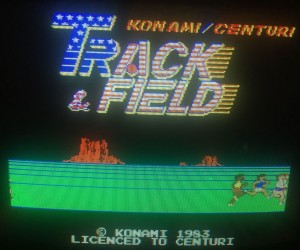Irem Air Duel arcade pcb repair
An original Irem Air Duel, though when I disassembled it I found an R-Type sticker on the middle board as well. Air Duel was actually released as two different pcbs – the ‘M82′ board as well as the ‘M72′ like R-Type. Although R-Type is considered a great title now, I’m not sure it sold very well when first released, and I suspect Irem were using up unsold R-Type boards when they released the M72 version of Air Duel.
This board came up some garbage when first powered on, then went to a solid black screen. The fact the board did something proved the CPU was running. I knew from the MAME driver this board has software control over blanking the screen so I decided to start there. On the schematics this is the CBLK signal which is combined at the LS32 OR gate at IC63. Logic probe showed the output of this was always low no matter what the inputs were. So bad LS32?
Well, bit of a weird one – the output of the LS32 goes to CN2 (the ribbon cable to the video board) and that pin had continuity to ground with the cable connected. So bad video board? Nope, bad cable – a ‘PC’ style IDE cable was used rather than the Irem original and the pins are actually inverted (so the top row went to the bottom row) and this just happened to ground out that LS32. Of course a whole lot of other pins were connected in the wrong way too – so quite lucky it displayed anything. Original Irem cables were taken from a parts board and the game worked fine.


































Recent Comments